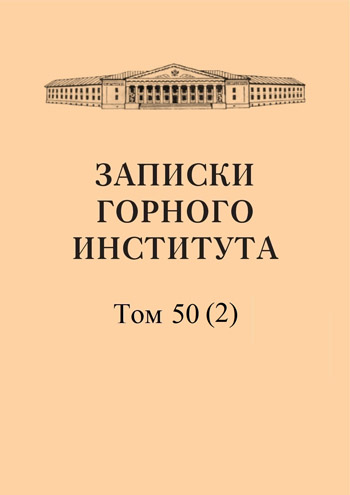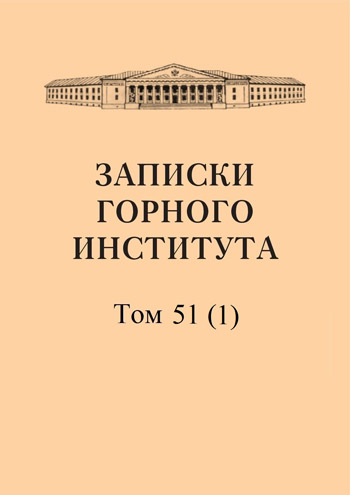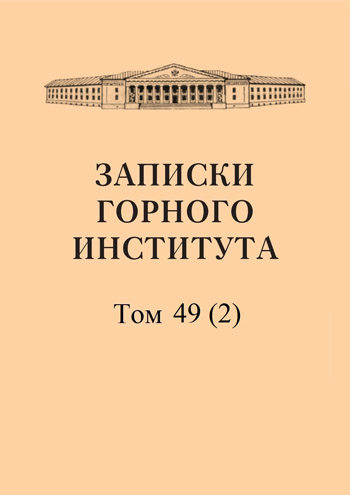-
Date submitted1965-08-11
-
Date accepted1965-10-11
-
Date published1966-02-14
Mathematics and geological sciences
- Authors:
- A. M. Zhuravsky
Whenever the study of nature moves from judgments of qualitative nature to the elucidation of quantitative regularities, we turn to science, the content of which are quantitative relations and geometric forms of the real world. Mathematical methods come to the researcher and become a powerful means of work, allowing to reveal the general laws, deeply hidden by the diversity of constantly changing phenomena and the abundance of observable facts ...
-
Date submitted1965-08-12
-
Date accepted1965-10-14
-
Date published1966-02-14
History and ways of development of mathematical crystallography
- Authors:
- I. I. Shafranovsky
One of the pressing issues of today is the introduction of mathematics in the field of geological and mineralogical sciences. In this connection it is instructive to trace on the example of crystallography, how from a purely descriptive natural history discipline, closely related to mineralogy, grew the modern science of crystals, which is characterized above all by a strictly mathematical character. One of the greatest crystallographers who put crystallography, in the words of A. K. Boldyrev, “... firmly, invariably and irrevocably on an exact mathematical, geometrical basis”, was the world-famous professor and director of the St. Petersburg Mining Institute (now the Leningrad Mining Institute) E. S. Fedorov (1853-1919). His outstanding pupil A. K. Boldyrev (1883-1946) and even later the most talented representative of the Fedorov school V. I. Mikheev (1912-1956) worked successfully in the same direction. They made a significant contribution to the development of the mathematical foundations of modern crystallography, forever linking the history of this science with the history of the Leningrad Mining Institute ...
-
Date submitted1965-08-27
-
Date accepted1965-10-08
-
Date published1966-02-14
Basic thermodynamic regularities in the study of the energy of ore formation
- Authors:
- N. I. Safronov
The data of quantitative analysis of geochemical materials with the use of statistical indicators indicate the following: 1) the overwhelming masses of metallic elements in the lithosphere are concentrated in a dispersed state in rocks; 2) in total, only tiny fractions of the masses of metals dispersed in rocks (thousandths to hundredths of a percent) have been detached into commercial ore deposits; 3) in recent decades, according to the experience of world practice, the amount of metals extracted from the subsurface is steadily increasing with a simultaneous decrease in the conditionality of the extracted metals.
-
Date submitted1965-08-07
-
Date accepted1965-10-25
-
Date published1966-02-14
Experience in the application of quantitative characterization in tectonics
- Authors:
- Yu. E. Pogrebitsky
When addressing the issues of structural geology and tectonic zoning, there is a need to evaluate and compare areas of the Earth's surface by the degree of dislocation of rocks. We have carried out such a study in the Taimyr folded region. It consists in transforming data on the geological structure of the Earth's surface (in the form of maps and explanatory notes to them) into a network of quantitative characteristics of the vertical component of tectonic movements and in identifying their variations over the area of the region ...
-
Date submitted1965-08-16
-
Date accepted1965-10-14
-
Date published1966-02-14
To the theory of construction of intermediate geologic documents
- Authors:
- I. G. Klushin
The study of the deep structure of tectonically complex areas and the search for deeply buried mineral deposits are tasks for which the researcher has to involve a wide range of geological, geophysical, geochemical and other features. As a rule, the more remote from the day surface of the studied geological objects, the greater the number of interacting, overlapping geological androcesses have taken part in the history of the area, the less definite and reliable are the signs of these objects, more vague - the boundaries of their manifestation ....
-
Date submitted1965-08-27
-
Date accepted1965-10-21
-
Date published1966-02-14
Optimization of selection of information contained in readings of several methods
- Authors:
- I. G. Klushin
- R. E. Soloveychik
When studying the geology of some area often use a variety of methods. Each of them from the point of view of a particular task brings not only information of interest to the researcher at the moment, but also information of much less interest, or not essential at this stage of research ...
-
Date submitted1965-08-27
-
Date accepted1965-10-04
-
Date published1966-02-14
Mathematical Programming in Geophysics
- Authors:
- S. V. Shalaev
This paper provides the justification of the method of approximation of analytical expressions of geophysical fields by rational fractions and some other expressions. The method is based on the use of mathematical programming, mainly linear programming. The paper summarizes the experience of interpretation by this method of magnetic and gravitational anomalies on a computing machine “Ural-2”, which can operate in floating point mode ...
-
Date submitted1965-08-23
-
Date accepted1965-10-17
-
Date published1966-02-14
Tables of values of function F(τ, ψ0) for theoretical calculations on gamma logging
- Authors:
- A. G. Abazov
The original method of calculating the intensity of gamma radiation along the axis of the well intersecting the ore bed on the basis of the saturation curve of γ-activity, which characterizes the increase in the intensity of γ-radiation in the center of the formation Imax with increasing formation thickness H ...
-
Date submitted1965-08-04
-
Date accepted1965-10-13
-
Date published1966-02-14
Determination of the seismic-drilling ratio - a problem of strategic game theory
- Authors:
- I. G. Klushin
In defense planning, production and scientific research in recent years, a new scientific discipline - game theory - has become widely used. Its main feature is that it makes it possible to best determine the necessary actions - to choose the most successful line of behavior (strategy). The solution is under the condition that the final outcome is not fully determined by any of the parties involved in the conflict situation, and the actions themselves are taken on the basis of incomplete information ...
-
Date submitted1965-08-10
-
Date accepted1965-10-11
-
Date published1966-02-14
About accuracy of determination of the borehole axis by its inclination and azimuth in separate points
- Authors:
- A. M. Zhukovsky
- A. A. Krzhizhanovskaya
The spatial position of the borehole is usually determined by measuring its inclination 8k and azimuth fk at a number of points Mk, the distance Sk from the wellhead is known (k - 1, 2 . .). Such determination is reduced either to the calculation of the coordinates of the well axis, or to its graphical construction according to the measurement data ...
-
Date submitted1965-08-09
-
Date accepted1965-10-18
-
Date published1966-02-14
Classification and basic principles of mathematical processing of natural element distribution patterns
- Authors:
- G. S. Porotov
In the course of studies of the behavior of various elements in rocks, ores and minerals, there is a need for mathematical processing of a large number of analyses. The results of the study are used for prospecting for mineral deposits, for elucidating the formation of rocks or ores, for the purposes of sampling and calculating reserves, and for solving other questions ...
-
Date submitted1965-08-12
-
Date accepted1965-10-27
-
Date published1966-02-14
Example of distribution of ore reserves in polymetallic deposits
- Authors:
- D. N. Safronov
In considering the distribution of global single-conditional reserves of a metal in postmagmatic deposits, a number of hypothetical relationships have previously been derived for the distribution of the number of deposits (ore bodies) of different sizes and the distribution of total ore volumes contained in ore bodies of the same size ...
-
Date submitted1965-08-05
-
Date accepted1965-10-20
-
Date published1966-02-14
Evaluation of accuracy of semi-quantitative spectral analysis by probability scale
- Authors:
- E. M. Kwiatkowski
To assess the accuracy of spectral analysis, it is necessary to have at one's disposal, as usual, several dozens of twice analyzed samples. Since in semi-quantitative spectral analysis discrepancies between repeated determinations are quite large, and the analysis is usually received, as a rule, samples with sharply different grades, the assessment of the accuracy of the analysis should be carried out in relative units ...
-
Date submitted1965-08-17
-
Date accepted1965-10-17
-
Date published1966-02-14
Partial correlation coefficients in geochemical studies
- Authors:
- L. M. Gorbunova
- Yu. N. Kapkov
The techniques of correlation analysis as a method of statistical processing of the results of various determinations are now increasingly widely used in geochemical studies.Correlation analysis is used to assess the nature and strength of the relationship between chemical elements in paragenetic associations. For this purpose, regressions between two elements are most often studied by calculating and assessing the significance of pairwise correlation coefficients r. In the geochemical interpretation of regressions, it is necessary to take into account the possibility of influence on the selected relationships of other chemical elements present in characteristic associations ...


